Matador Network's Blog, page 1217
November 21, 2018
House from “Fixer Upper” on Airbnb

When you get an Airbnb, you want a move-in-ready home, not some shack in serious need of TLC. Well, this Airbnb is as “fixed up” as it will ever be because it was remodeled by the cream of the crop: Chip and Joanna from the TV show Fixer Upper. The house, in Crawford, Texas, was featured in the show’s season four finale and quickly became a fan favorite. While the gorgeous home was intended for the show’s executive producer, Michael Matsumoto, it’s now open for the general public to rent on Airbnb.

Photo: Airbnb
With four bedrooms, seven bathrooms, an open-concept kitchen, al fresco dining area, play structure, a basketball court, and small home gym, the house has everything guests could possibly want. Matsumoto told PEOPLE, “When we welcome anyone into our house, our family included, and they see how beautiful it is, their jaws always hit the floor. I don’t want to brag but it really is the most amazing house in the world.”
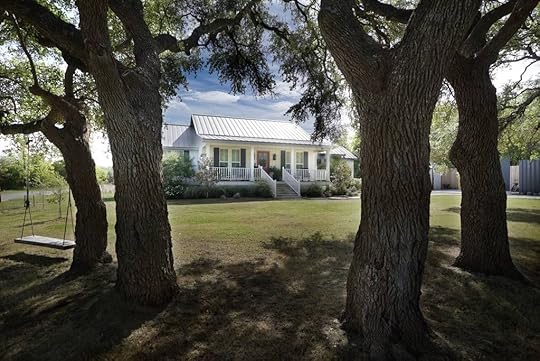
Photo: Airbnb
While no one has stayed there yet, the first guests are scheduled for the first week of December. “It was hard to make the decision to put our house on Airbnb,” Matsumoto said, but “our house is such a special gift and so many fans have told us that it’s their favorite, it’ll be nice to let them get to experience the magic of it.”

Photo: Airbnb
The house can accommodate up to 12 guests, and prices start at $300 per night. 
H/T: Travel & Leisure

More like this: 6 beautiful French churches you can actually stay in
The post You can now rent this “Fixer Upper” by Chip and Joanna Gaines on Airbnb appeared first on Matador Network.

Trespassing tourist killed
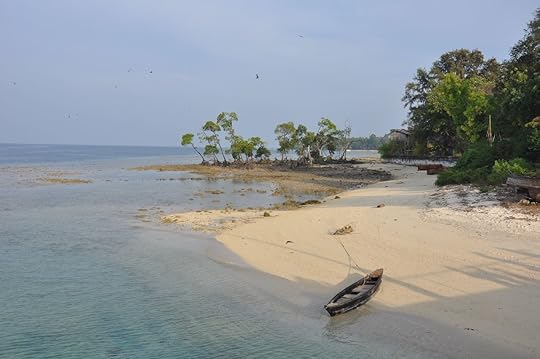
When people make it clear they want to be left alone, it’s a matter of respect and intelligence to just back off. That’s exactly what John Allen Chau, an American tourist in his late 20s, should have done with India’s Sentinelese tribe.
It is common knowledge in this part of India, and among anthropologists, that the Sentinelese tribe, an indigenous people living on the North Sentinel Island of India’s Andaman Islands, want nothing to do with outsiders. For this reason, any interaction with the islanders is prohibited by the Indian government.
The Sentinelese tribe is extremely isolated from human contact and the Indian Navy enforces a buffer zone to keep people away, but Chau was determined to visit them and convert them to Christianity, The New York Times reports.
Chau was so keen on being one of the few outsiders to interact with the Sentinelese people that he hired a fishing boat and took a kayak and a Bible to the island.
The first time he attempted to reach the shores, he was shot at with arrows and retreated. Chau tried to reach the island several times in the span of three days, offering gifts such as a soccer ball, scissors, and fishing line to the tribesmen. But the fishermen who took Chau to North Sentinel explained to the police that they had later seen his body being dragged on the beach by the Sentinelese people.
According to The New York Times, the people who helped take Chau to North Sentinel “have been arrested and charged with culpable homicide not amounting to murder and with violating rules protecting aboriginal tribes.” 
H/T: The New York Times

More like this: The 7 most stunning remote monasteries in the world
The post American tourist killed by remote tribe in India appeared first on Matador Network.

What is sangrita?

If you were asked to name the holy trinity of tequila drinking, the obvious answer would be salt, tequila, and lime. It’s the de facto way to order a tequila shot in places around the US. But if you want to drink tequila and actually enjoy it, then you should avoid washing it down with a mouth full of lime. Instead, you should chase tequila the traditional way with sangrita.
Sangrita, meaning “little blood” in Spanish, is a traditional spicy juice mixture that’s sipped alongside a shot of tequila. It’s not to be confused with sangria, the fruit, wine, and brandy drink popular the world over. Sangrita is sipped for the purpose of enhancing the spirit’s earth-driven nuances. That’s right, this isn’t your traditional chaser, and it certainly isn’t used to drown out the sorrows of bottom-shelf swill. This non-alcoholic spiced beverage, meant to be sipped instead of taken as a shot, is actually a beverage enhancer, meant to magnify, not mask, the flavors within the spirit. Think of it as a friend that brings out tequila’s best side while also cleaning your palate.
The history of sangrita is hazy, but OG sangrita recipes hail from the Lake Chapala region of Jalisco, Mexico. It’s usually crafted from leftover orange juice, pomegranate juice, powdered chiles, and other spices. Although many American recipes include a heavy dose of tomato juice, the more authentic recipes tend to be citrus heavy and dominated by orange juice, lime juice, chili powder, and other various spices. That said, sangrita can essentially be whatever a person wants it to be as long as it’s acidic and spicy. It’s kind of like a bloody mary recipe: Once you nail the basics down, you can adjust the drink to whatever your taste buds crave.
No matter how you do it, it’s infinitely better than licking salt off the back of your hand and biting a lime every time you want to drink tequila. So next time you’re looking to add some spice to your drinking life, look no further than a healthy dose of sangrita.
How to make sangrita
Take this recipe as a general guideline, and adjust (and expand) as you see fit. The best sangrita is the one you make yourself. And always remember: Sangrita was designed as a way to use leftover juices.
Necessary ingredients:
Two parts orange juice
One part lime juice
One part grenadine or pomegranate juice
Chile powder and other spices to taste
Where to find sangrita

Photo: Big Star Chicago/Facebook
House-made sangrita is common at quality tequila bars around Mexico, but it’s a little harder to find the farther north you go. Here are a few places to try it yourself if you have a chance.
Big Star in Chicago: This one’s for the people who want to drink sangrita but prefer their shots served with a beer as well. Dubbed Los Tres Reyes, Big Star serves a drink that consists of a can of Tecate, a shot of tequila, and a shot of sangrita made with pineapple, apple cider vinegar, habanero peppers, and orange.
La Biblioteca in New York City: It’s only fitting that the bar with one of the largest collections of agave spirits in the Big Apple also serves house-made sangrita. The bar’s name translates to “the library,” and it features some 400 bottles of tequila, mezcal, and sotol. You can even store your own bottles here, and, if you’d like, have the bartender pour some sangrita alongside.
Sangrita Saloon in Indianapolis: You have to respect a bar that’s true to its name. Sangrita Saloon is an agave-focused restaurant and bar with more than 120 different agave spirits. It also, of course, serves house-made sangrita with the tequila (which you can get with a side of Tecate as well if you’d like). 

More like this: 5 essential experiences to have in Tequila, Mexico
The post The traditional way to drink tequila will change your mind about tequila shots appeared first on Matador Network.

Things people from Arizona never say

Arizonans are a special breed. They moan about the heat and brag about the amazing Mexican food available in their neck of the woods, but there are certain things that Arizonans never say. Ever. Here are seven things that will never be heard in Arizona.
1. “Pour me a chardonnay.”
The closest thing an Arizonan is going to order at a bar or serve you at their pool party is a pink prickly pear margarita. Arizonans drink one of three things (if they drink alcohol): tequila, whiskey, or beer. Retirees might indulge in brandy or something. But chardonnay ain’t a thang in our state.
2. “Can I borrow your truck?”
There’s a bumper sticker that’s been gaining popularity throughout Arizona over the last 10 years or so. It says: “Yes, this is my truck, and no, I won’t help you move.” Thing is, an Arizonan friend doesn’t need to borrow your truck to move, or for any other reason. They have their own damned truck. And they’ll help you fix yours if it breaks.
3. “What an ugly dog.”
According to Arizonans, you can’t find an ugly pup. All canines are cute, whether they’re gangly, teeny, three-legged, blind, mangey, or snaggle-toothed. We adore all pooches — chihuahuas and pits and coyote mixes alike — for there are no other breeds in Arizona!
4. “Yo’ mama’s salsa is tooooooo spicy.”
Let’s get one thing straight — all of our mamas make the world’s best salsa and our tías make the best beans. Our abuelas make the best everything, especially tortillas. And tamales. And fry bread. And chili. Second, no salsa is too spicy for an Arizonan.
5. “Let’s go to the Grand Canyon.”
Unless they’re inviting you to the North Rim, they’re dragging you to tourist hell, and they know it. Otherwise, no Arizonan would ever even hint at a trip to the Canyon. Arizonans know too many other cool places to visit instead.
6. “Let’s move to California.”
We want to, we really do. But how will we live? How will we ever move back? A true Arizonan friend will never voice our shared deepest desire — to get out.
7. “Go Lumberjacks!”
Half the Arizonans are going to say “Go Wildcats!” and the other half are going to say “Go Sun Devils!” but zero people are going to say “Go Lumberjacks!” It’s just not a thing. Or it’s a thing all Arizonans can agree on. NAU students are too busy skiing and getting stoned to play much football. Or basketball. 

More like this: 13 signs you were raised by Arizonan parents
The post 7 things you’ll never hear an Arizonan say appeared first on Matador Network.

Sperm whale in Indonesia found dead
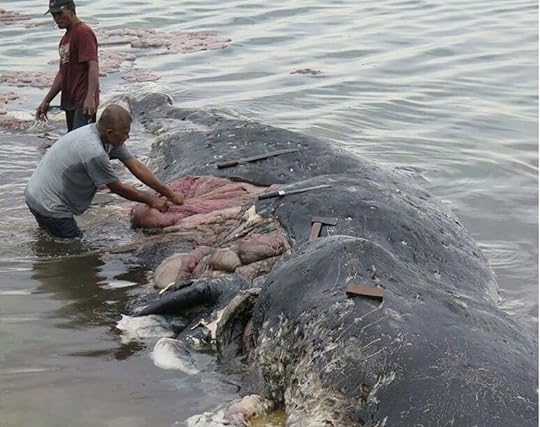
As if we needed more evidence that polluting our oceans with plastic is horrible for marine life, a sperm whale was just found dead with 13 pounds of plastic in its stomach. Discovered on Monday in the waters of Kapota Island in Indonesia, the 31-foot long carcass was in an advanced state of decay, making it impossible to know the degree to which plastic caused the death. It’s safe to say, however, that it didn’t do the whale any favors. According to a tweet from WWF Indonesia, the whale’s carcass contained 19 pieces of hard plastic, four plastic bottles, 25 plastic bags, two flip-flops, 115 plastic cups, and seven pounds of string.
Dwi Suprapti, marine species conservation coordinator at WWF Indonesia, told the Associated Press, “Although we have not been able to deduce the cause of death, the facts that we see are truly awful.” In a similarly tragic situation, a pilot whale off the coast of Thailand died this past June after swallowing over 17 pounds of plastic.
According to reporting by NPR’s Christopher Joyce, Indonesia is the second-largest producer of plastic pollution in the oceans, behind China. The Indonesian government is taking steps to reduce the use of plastic, such as encouraging shops to avoid using plastic bags, and educating students on the importance of recycling. Its goal is to reduce plastic waste by 70 percent by 2025, but there’s still a long way to go.
Larger plastic items like bottles and bags may be easier to quantify, but it’s smaller plastics that pose the more prevalent threat. Joyce reported that many plastics break down into tiny microplastics, which are ever-present in “oceans, rivers, and lakes. They’re also in soil…And, even more concerning, microplastics are in drinking water. In beer. In sea salt. In fish and shellfish.” 
H/T: BBC News

More like this: 6 steps you can take today to become a zero waste traveler
The post Sperm whale found dead with 13 pounds of plastic in its stomach appeared first on Matador Network.

Monet’s Water Lilies virtual reality
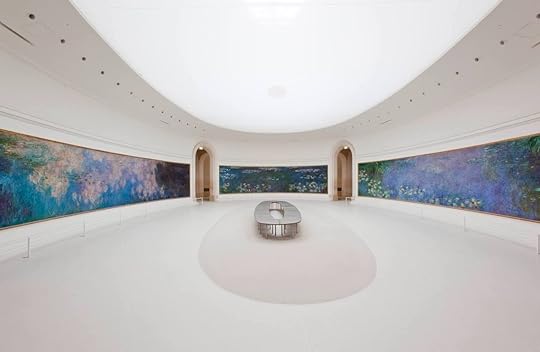
The Musée de l’Orangerie in Paris is taking the typical museum experience to the next level. When visiting the “Water Lilies” rooms — two oblong-shaped galleries with eight panoramic panels of Claude Monet’s famous work — guests can now choose to take a virtual reality journey, and immerse themselves fully in the artist’s world. Called “Claude Monet: The Water Lily Obsession,” the experience will allow guests to “visit” Monet’s Giverny home and garden, which had been the inspiration for much of his work. (Note that it is possible and very much worth it to visit Monet’s home and its incredible garden in Giverny, just outside of Paris.)
Voir cette publication sur InstagramUne publication partagée par Musée de l'Orangerie (@museeorangerie) le 20 Nov. 2018 à 7 :52 PST
The experience will last a total of eight minutes, and trace the life of Monet’s “Water Lilies” from creation to exhibition. According to a press release, “You stand in the shallow waters at Giverny, inspired as he was inspired by the dappled light and fickle seasons…You are then transported to Monet’s studio, where a virtual canvas is stretched taut above and around you, and the artist’s bold, searing brushstrokes build up across your vision.”
According to ARTE, who produced the VR experience, the goal is to allow guests to plunge head first into Monet’s creation process. Monet also suffered from cataracts later in life, and the VR experience attempts to mimic his worsening eyesight and the strain that placed on his work.
The experience is part of the museum’s exploration of the artist’s relationship with French Prime Minister Georges Clemenceau. Clemenceau had encouraged Monet to continue painting into the later years of his life, despite his cataracts. After the end of World War I, Monet officially donated a group of his “Water Lilies” paintings to the French government. In a letter to the prime minister, he said, “It’s not much, but it is the only way I have of taking part in the Victory.”
The VR experience debuted on November 12th, and will remain open until March 11th, 2019. 
H/T: Smithsonian.com

More like this: How to crush the Louvre in one day
The post Experience Monet’s “Water Lilies” like never before with this new VR experience appeared first on Matador Network.

Thanksgiving traditions in Wisconsin

Thanksgiving is upon us, and people around the country are preparing to celebrate with traditions going back generations. In Wisconsin, our traditions often pay homage to our Scandinavian and German influences, our grandparents’ recipes, and our favorite pastimes. Here are nine Thanksgiving traditions that can only be found in Wisconsin.
1. Deer hunting with the family
The alarm goes off hours before sunrise. You pull on layers of warm clothes and your orange hat and vest. You head into the woods with your uncles, grandfather, dad, and cousins. You each climb a tree stand and wait quietly. Everyone returns to the house in time for a late breakfast, ready to spend the day watching football and cooking Thanksgiving dinner.
2. Cheering for the Packers even if they’re not playing
You don your best green and gold, even if the Packers aren’t playing. You know exactly who you want to win based on what gives the Packers the best chance of winning the division. The whole family’s into it and even grandma yells at the TV a few times.
3. Enjoying Door County cherries
Whether it’s sipping on grandpa’s homemade cherry bounce or baking a cheesecake for dessert, cherries from Door County are a requirement for a good Thanksgiving feast.
4. Decorating for fall
As soon as you took down the Halloween decorations, the Thanksgiving ones went up in their place. Garlands of faux fall foliage line the windows and a porcelain turkey-shaped candy dish sits on the coffee table.
5. Frying the turkey
Legend has it that Wisconsinites were the first to stick a beer can in a turkey and fry it. Whether that’s true or not, you know it’s still the best way to cook Thanksgiving’s main course.
6. Preparing German or Scandinavian side dishes
If your family is Scandinavian, lefse and lutefisk accompany your turkey dinner and you snack on some raspberry kringles during the day. If your family has a German heritage, Thanksgiving dinner includes heaps of buttery cabbage and sausage. And no matter who your ancestors were, everyone loves a German potato salad.
7. Indulging in jello salad
This sweet side is a precursor to dessert, and the best way to eat your fruits and veggies on Thanksgiving. The deliciousness of fruit and carrots suspended in gelatin is one that only Wisconsinites can appreciate.
8. Snacking on pickled eggs
If you’re hungry before the turkey is ready, a pickled egg, with its salt-and-vinegar kick, will satiate your cravings until dinner is ready.
9. Getting ready for Christmas
As soon as Thanksgiving dinner is over, it’s time to start thinking about the next holiday. Thanksgiving night is the time to snuggle up together before bed with a classic Christmas movie and start decorating the tree. 

More like this: 9 signs winter is coming in Wisconsin
The post 9 Thanksgiving traditions that you only see in Wisconsin appeared first on Matador Network.

November 20, 2018
Is hooking up abroad ethical?

I spent six years writing a weekly budget travel column, and for most of that time, I was single. (Yeah, you try to maintain a relationship when you’re out of town 200 days a year.)
Most friends were sympathetic to my solo plight. But one, a married friend wishing to live vicariously through the life he imagined I led, was not. Whenever I mentioned a woman’s name in an article — a bus-mate or barista or guide or Couchsurfing host or Airbnb neighbor that had given good advice or said something worth quoting — he tried to read between the lines to see if romantic sparks had flown.
They almost never had. In part, that’s because a travel writer with constant deadlines does not go out on the town each night. He stays in, writing or frantically planning the next day. And anyway, what’s to say I was interested (possible), the woman was interested (unlikely), and that I had the game to make it happen (almost inconceivable)?
In a way, that’s too bad, because romantic relationships on the road can be great gateways into experiencing a foreign culture intimately. But in another way, it’s lucky that I missed out because navigating the dating scene abroad can also be a minefield.
So, when is it ok to hook up with a local?
The answer is complicated, of course. Much more complicated than whether or not it’s OK to hook up with a fellow traveler, someone more or less in the same situation as you. But when financial and power imbalances come into play, things get tricky — just as they do back home.
I learned my first lesson on this at age 23, after a three-day fling in a small city I was passing through in the Dominican Republic. I saw it as a fling, anyway. She saw it as something completely different. “I finally know what love is, and you’re leaving tomorrow,” she cried as we said goodbye. Streams of letters (yes, letters, this was the 1990s) followed. You can hear the end of the story in the video.
Since then, I’ve been much more deliberate and careful about interactions with locals in countries abroad where casual flings may not be as common or socially acceptable, and engaging sexually with locals can have lasting consequences.
More recently, as a journalist, I’ve interviewed travelers about their experience in Rio de Janeiro, where local women at Copacabana beach often mingle with foreign travelers. It’s complicated territory that I’m by no means an expert in, but I scratch the surface in the video below, and slightly below the surface even more in Chapter 6 of my new book, Rediscovering Travel. Both are meant as conversation starters, not definitive answers. I’d love to hear your perspective in the comments section of the video on YouTube or via the contact page at sethkugel.com.
Seth Kugel is the author of Rediscovering Travel: A Guide for the Globally Curious, out this week from Norton. He was formerly the Frugal Traveler columnist for the New York Times. You can purchase his new book on Amazon. 

More like this: How to use Tinder as your personal concierge abroad
The post Is it ethical to hook up with locals abroad? appeared first on Matador Network.

25 at-risk cultural heritage sites
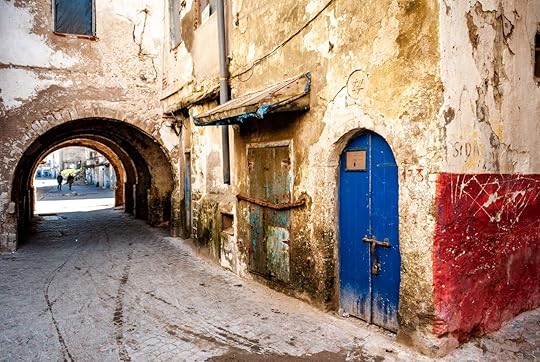
If we don’t stay constantly vigilant when it comes to protecting the world’s cultural heritage sites, we risk losing them to human conflict, urbanization, natural disaster, or climate change. That’s why every two years, the World Monuments Watch calls attention to the world’s most at-risk monuments. Since 1996, the Watch has recognized 814 threatened sites in need of conservation efforts and has invested over $300 million of raised money in protection.
The 2018 World Monument Watch features 25 sites from around the world. Some sites date from prehistory whereas some are 20th-century constructions; some sites are in rural settings while others are in busy urban centers. And no country is immune — New York’s Buffalo Central Terminal is considered an architectural landmark in dire need of redevelopment while, on the other side of the world, an important public housing building in Australia is facing the risk of demolition. Regardless of their locations, each site represents a great opportunity for conservation and community engagement.
Here is a complete list of the 25 sites.
1. Government House, Antigua and Barbuda
View this post on InstagramA post shared by World Monuments Fund (@worldmonumentsfund) on Oct 20, 2018 at 7:32am PDT
A symbol of the nation’s democracy, Antigua’s Government House is of traditional West Indian design and dates back to the early 19th century. Severe weather conditions — including heat, drought, hurricanes, and earthquakes — have contributed to the building’s recent decay.
2. Sirius Building, Sydney, Australia
View this post on InstagramA post shared by World Monuments Fund (@worldmonumentsfund) on Jul 9, 2018 at 2:59pm PDT
The Sirius Building was constructed as a local housing project for community members displaced by nearby harborside redevelopment. An iconic sight in Sydney, Australia, it’s now at risk of demolition as the real estate in Millers Point has become highly coveted.
3. Ramal Talca-Constitución, Chile
View this post on InstagramA post shared by Espacio4 (@talleres_espacio4) on Aug 18, 2018 at 5:25pm PDT
A railway branch connecting Talca to the port of Constitución, it was once part of the railway system that connected all of Chile until it fell into decay at the end of the 1900s. Built between 1888 and 1915, it was named a national landmark in 2007.
4. Grand Theater, Prince Kung’s Mansion, Beijing, China
View this post on InstagramA post shared by World Monuments Fund (@worldmonumentsfund) on Mar 19, 2018 at 2:54pm PDT
This 18th-century home belonged to Yixin, aka Prince Kung, a statesman and member of the Qing imperial family. It was the most celebrated of all Beijing’s royal residences and has since functioned as a university campus and office for government agencies. In 1978, it gained heritage status and protections, and it’s now one of China’s best-preserved royal residences.
5. Eliyahu Hanavi Synagogue, Alexandria, Egypt
View this post on InstagramA post shared by World Monuments Fund (@worldmonumentsfund) on Aug 13, 2018 at 2:18pm PDT
Eliyahu Hanavi is one of two remaining synagogues in Alexandria and a symbol of Egypt’s historical religious diversity. Built in 1805 and damaged during Napoleon’s invasion, it was the last operational synagogues in Egypt until it closed in 2012. Although a collapsed roof left the synagogue exposed to the elements, emergency funds have been allocated for its repairs.
6. Takiyyat Ibrahim al-Gulshani, Cairo, Egypt
View this post on InstagramA post shared by World Monuments Fund (@worldmonumentsfund) on Nov 13, 2018 at 2:49pm PST
The al-Gulshani complex was the first religious foundation established in Cairo following the Ottoman conquest of 1517, as well as the first to be named a residential religious complex. Built between 1519 and 1524, the structure has recently fallen victim to earthquakes, looting, changing religious influences, and financial struggles.
7. Potager du Roi, Versailles, France
View this post on InstagramA post shared by World Monuments Fund (@worldmonumentsfund) on Jun 14, 2018 at 2:12pm PDT
The 23-acre kitchen garden of the Palace of Versailles in France has been cultivated for over 300 years and was an integral part of the palace’s grandiose reputation. Since it’s separate from Versailles’ main gardens, it does not directly benefit from the palace’s tourism resources, and challenges like damaged drainage systems, greenhouses, infrastructure, and visitor amenities, must be addressed before it’s too late.
8. Post-Independence Architecture of Delhi, India
View this post on InstagramA post shared by World Monuments Fund (@worldmonumentsfund) on Apr 25, 2018 at 1:51pm PDT
Since it only dates back to 1947, Delhi’s post-independence architecture lacks historical recognition and therefore protection from demolition. All 62 of these designated structures, however, represent the wide range of architectural styles in the 70 years since India gained its independence from Great Britain. Although advocates have sought legal protection, it has so far been denied. The Delhi Hall of Nations, featured in the picture above, was demolished in April 2017 in the midst of a court battle to save it.
9. Al-Hadba’ Minaret, Mosul, Iraq
View this post on InstagramA post shared by World Monuments Fund (@worldmonumentsfund) on Nov 3, 2018 at 12:12pm PDT
One of the landmarks of Mosul’s old city, the Al-Hadba’ Minaret was built in 1172 and was one of the city’s most defining fixtures. It was so important that it actually featured on the Iraqi 10,000-dinar banknote. When ISIS fled Mosul in 2017, it detonated explosives to destroy the mosque and most of the minaret.
10. Lifta, Jerusalem, Israel
View this post on InstagramA post shared by World Monuments Fund (@worldmonumentsfund) on Nov 1, 2017 at 2:25pm PDT
Lifta is the only Palestinian settlement not repopulated or destroyed after its residents were evicted between 1947 and 1948. Situated on terraces overgrown with trees and shrubs, the ruins are now in danger of being destroyed by redevelopment.
11. Amatrice, Italy
View this post on InstagramA post shared by World Monuments Fund (@worldmonumentsfund) on Jun 15, 2018 at 2:06pm PDT
On August 24, 2016, an earthquake struck the Italian city of Amatrice, causing 229 deaths and 400 injuries and leading the mayor to proclaim “the town is no more.” The city is still an uninhabited heap of rubble, though many are hopeful for its eventual reconstruction and revitalization.
12. Kagawa Prefectural Gymnasium, Japan
View this post on InstagramA post shared by World Monuments Fund (@worldmonumentsfund) on Jun 16, 2018 at 8:48am PDT
Built in the 1950s, the gymnasium hosted local sports events in Takamatsu, Japan, for 50 years. It was designed to evoke a traditional Japanese wooden barge, as well as the strong body of an athlete. When its suspended roof began to leak, however, it was closed to the public in 2014, and its rehabilitation will require extensive updating to its infrastructure.
13. Jewish Quarter of Essaouira, Morocco
View this post on InstagramA post shared by World Monuments Fund (@worldmonumentsfund) on Nov 6, 2018 at 2:44pm PST
Established in the mid-1700s, Essaouira’s Jewish Quarter is a symbol of Morocco’s diversity — and of its tolerance. Since the 1980s, however, the large Jewish community has mostly abandoned the area, and many of the Jewish structures are now abandoned, crumbling, or converted into modern shops. The area has become a popular pilgrimage site for many descendants of Moroccan Jews who hope it will retain its architectural and cultural significance.
14. Sukur Cultural Landscape, Nigeria
View this post on InstagramA post shared by World Monuments Fund (@worldmonumentsfund) on Nov 7, 2017 at 2:26pm PST
Photo: Dipo Alafiatayo
Located on a plateau in the Mandara Mountains, and enjoying control of the area’s iron ore and local wood, the Sukur community has been a dominant culture in Nigeria for centuries. Recently, the raids of terrorist group Boko Haram have destroyed Sukur buildings and endangered the culture’s architectural history as a whole.
15. Historic Karachi, Pakistan
View this post on InstagramA post shared by World Monuments Fund (@worldmonumentsfund) on Nov 6, 2017 at 1:11pm PST
As urbanization seizes Karachi, Pakistan’s largest city, its historic integrity is in danger. In the mid-1900s, Karachi had been a major center of commerce, but its soaring population since then has put stress on its infrastructure and imperiled its traditional aesthetic.
16. Cerro de Oro, Cañete Valley, Peru
View this post on InstagramA post shared by World Monuments Fund (@worldmonumentsfund) on Nov 8, 2017 at 1:48pm PST
Just south of Lima, the archeological site of Cerro de Oro has been plagued by looting and neglect. Most of the area is still unexplored though remains of an adobe settlement from 550, and various funeral relics, have already been uncovered. The illegal trespassing and looting, however, endanger any future significant discoveries.
17. Tebaida Leonesa, León, Spain
View this post on InstagramA post shared by World Monuments Fund (@worldmonumentsfund) on Jul 6, 2018 at 7:32am PDT
This valley is famous for its silence, tranquility, and its 10th-century medieval churches. Since a changing economic system led to the departure of many of the area’s younger residents, much stress is being placed on the remaining inhabitants, tasked with tending to and maintaining the area’s cultural integrity.
18. Souk of Aleppo, Syria
View this post on InstagramA post shared by World Monuments Fund (@worldmonumentsfund) on Jan 9, 2018 at 11:27am PST
Once the center of Aleppo, Syria, the souk was the heart of the city’s social, commercial, and cultural exchange. People traded everything at the market, from spice and sweets to textiles and soap. In 2012, after much fighting between Syrian government forces and insurgents, the souk went up in flames and is now one of many ancient Syrian structures in desperate need of revitalization.
19. Chao Phraya River, Bangkok, Thailand
View this post on InstagramA post shared by World Monuments Fund (@worldmonumentsfund) on Nov 13, 2017 at 3:24pm PST
Although the Chao Phraya River has shaped the formation of Bangkok, a modern construction project now threatens to change the city’s relationship to the river forever. There are proposals to build an elevated promenade along both sides of the river with concrete pylons supported on the riverbed. If carried out, the project would improve public access to the riverfront, but the concrete would block river views and cause many riverfront communities to be displaced.
20. Blackpool Piers, United Kingdom
View this post on InstagramA post shared by World Monuments Fund (@worldmonumentsfund) on Mar 31, 2018 at 7:32am PDT
Located on the Irish Sea coast of England, Blackpool was the world’s first seaside resort town for the working class. Open since 1863, the piers are still considered the most finely constructed seaside piers in the country, with 17 million visiting Blackpool each year to see them. Like many coastal communities around the world, however, Blackpool is faced with rising sea levels and extreme weather events, which threaten to damage or destroy the piers.
21. Alabama Civil Rights Sites, Alabama, USA
View this post on InstagramA post shared by World Monuments Fund (@worldmonumentsfund) on Feb 19, 2018 at 5:15pm PST
Photo: @wabranowicz
The monumental civil rights struggles of the 1950s and 1960s, which resulted in desegregation and voting equality, is commemorated in the private houses, churches, and meeting spaces throughout Alabama. Some have been turned into museums, but many, especially in Montgomery, have not been given historical status and are in danger of falling into disrepair.
22. Buffalo Central Terminal, New York, USA
View this post on InstagramA post shared by World Monuments Fund (@worldmonumentsfund) on Apr 16, 2018 at 3:03pm PDT
First opened in 1929, Buffalo Central Terminal is a symbol of Buffalo’s status as a one-time economic powerhouse. The terminal consolidated passenger traffic in a single facility and made transportation throughout the city much easier. It has since been made irrelevant by the construction of the interstate system and fallen into disuse, with the last train departing the terminal in 1979. Many residents, however, are trying to protect the terminal from being torn town by striving to revitalize the surrounding Broadway-Fillmore neighborhood.
23. Old City of Ta’izz, Yemen
View this post on InstagramA post shared by World Monuments Fund (@worldmonumentsfund) on Nov 14, 2017 at 3:34pm PST
Originally a fortified citadel in the 11th century, the Old City of Ta’izz later became the capital of the Rasulid dynasty, which ruled all of Yemen from 1229 to 1454. Now, Ta’izz finds itself embroiled in a military conflict, caught in the crossfire between Houthi rebel forces against a coalition of foreign states. Ta’izz has been repeatedly damaged by airstrikes and shelled by rebels. In 2016, a 16th-century mosque was destroyed by extremists, as well as other historic buildings and documents.
24. Matobo Hills Cultural Landscape, Zimbabwe
View this post on InstagramA post shared by World Monuments Fund (@worldmonumentsfund) on Nov 15, 2017 at 3:20pm PST
Known for its vast granite rock formations, Matobo Hills contains several inhabited sites that mark various important stages of human history. From hunter-gatherer peoples to the British Empire, the cultural elements of this area are intertwined with the landscape. In many areas, ancient rock art is being threatened by deforestation, graffiti, and fires caused by human activity. Rising population, a decline in natural resources, and the harsh elements have also led to the area’s decay.
25. Disaster Sites of the Caribbean, the Gulf, and Mexico
View this post on InstagramA post shared by World Monuments Fund (@worldmonumentsfund) on Oct 21, 2017 at 12:53pm PDT
The devastation of the hurricanes of 2017 is still fresh in everyone’s minds, especially those affected in the Caribbean, the Gulf, and Mexico. Homes, schools, hospitals, parks, playgrounds, and more were destroyed, and the cost of restoring them is staggering. Although plans to repair and reconstruct these areas are already underway, it is hoped that including these disaster sites in the World Monuments Watch will mobilize the conservation response even quicker. 

More like this: 8 of the most underrated UNESCO sites you need to visit
The post These are the 25 cultural heritage sites that are most at risk appeared first on Matador Network.

6 mountain distilleries with jaw-dropping views

While a distillery should always be judged by the quality of its booze, it doesn’t hurt when the tasting rooms also offer up sweeping mountain views with every pour. There are distilleries high up in the mountains all around the world, and one of the best times to visit is when ski season starts and the air gets crisp (although there’s never a bad time to visit). Whether you want to enjoy an apres-ski tasting in Colorado or escape the cold in Jalisco, Mexico, these six mountain distilleries provide delicious spirits and awe-inspiring views.
1. Isle of Skye Distillers in Portree, Isle of Skye, Scotland

Photo: Isle Of Skye Distillers/Facebook
The Isle of Skye’s dramatic landscape doesn’t just include mountains. It’s also home to breathtaking waterfalls, castles, beautiful beaches, and rows of candy-colored houses, which make the Isle of Skye one of the dreamiest places to visit in all of Scotland. In Portee, you’ll find Isle of Skye Distillers, which produces two types of award-winning gin (it’s not all whisky in Scotland). If you’d like to learn from the experts, they offer a three-hour Gin School experience, during which you can take in the distillery’s history, learn all about its process, go through a guided gin tasting, select your own botanicals, and make and bottle your very own gin to take home.
2. Breckenridge Distillery in Breckenridge, Colorado
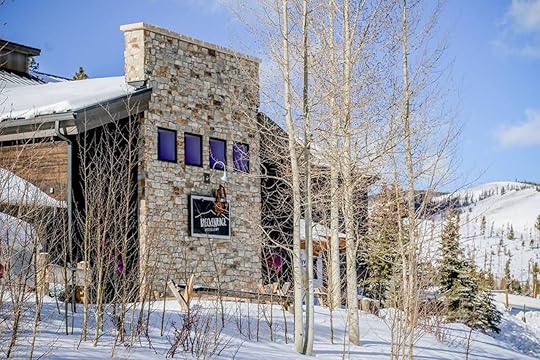
Photo: Breckenridge Distillery/Facebook
Breckenridge claims to be the world’s highest distillery, and you can’t deny that its view of the snow-capped Rockies is nothing short of spectacular. Breckenridge Distillery uses water from Rocky Mountain snowmelt to create its wide range of spirits, which includes a highly regarded bourbon, spiced rum, and quality flavored vodkas (think pear and chile, not bubblegum and Fruit Loops). Complimentary tours and tastings are offered daily, and you can upgrade your experience for $10 to taste more of the spirits. The Breckenridge Distillery Restaurant serves nose-to-tail fare from Chef David Burke and cocktails from Liquid Chef Billie Keithley.
3. Tequila Herradura in Amatitán, Jalisco, Mexico

Photo: Tequila Herradura/Facebook
Herradura’s nearly 150-year-old tequila distillery is set among the rich landscapes of Jalisco, surrounded by agave fields and flanked by volcanic mountains in the distance. Just getting there can be an experience in itself if you take the Herradura Express. The day begins when you board the locomotive in Guadalajara, where you’ll be served snacks and drinks for the three-hour journey. When you arrive at Casa Herradura, you’ll enjoy a distillery tour and tasting followed by lunch and entertainment before departing.
4. High West Distillery in Park City, Utah
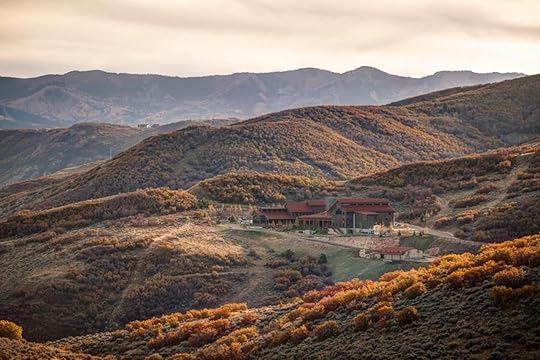
Photo: High West Distillery/Facebook
Just a 25-minute drive from Park City proper — and only about 40 minutes from Salt Lake City — High West is situated in Utah’s Wasatch-Uinta mountains and offers some of the booziest and most breathtaking views in the state. Stop by Wednesday through Saturday for distillery tours and a sample of High West’s bourbon and ryes in its on-premise tasting room. The distillery even has an on-site restaurant called The Nelson Cottage that serves a prix-fixe menu along with a whiskey tasting if you so desire. High West hosts special events throughout the year like a Kentucky Derby day and parties following limited whiskey releases, so check the site often if you want to plan your trip around something specific.
5. Mad River Distillers in Waitsfield, Vermont

Photo: Mad River Distillers/Facebook
Waitsfield is one of Vermont’s most underrated ski towns, and it’s located right next door to two of the best East Coast mountains: Mad River Glen and Sugarbush. Mad River Distillers, which launched in 2011, is situated on a 150-year-old farm in the Green Mountains, and it puts local producers and sustainable agriculture on a pedestal. The distillery offers $10 tours at 1:00 PM daily, which includes samples of its award-winning spirits. Expect to sip on delicious whiskies, apple brandy, and rum, including one that’s finished in maple-syrup barrels. They also have a tasting room in Burlington where you can imbibe and shop for cocktail supplies.
6. Prohibition Distillery in Roscoe, New York

Photo: Prohibition Distillery/Facebook
Roscoe is in the western Catskill Mountains and also known as Trout Town USA because of the plentiful fishing along the Delaware River. Local Prohibition Distillery is a small but mighty operation that produces bourbon, gin, an incredibly smooth vodka, and one of the tastiest aged gins. You can take a tour for a small fee or simply sample its line of spirits for a donation that goes to the local fire department. Visit in the summer for an outdoor cocktail at Prohibition’s Bootlegger Alley Bar and take in the fresh mountain air while you drink. 

More like this: The 5 most epic whisky experiences in Scotland
The post 6 mountain distilleries with jaw-dropping views appeared first on Matador Network.

Matador Network's Blog
- Matador Network's profile
- 6 followers



